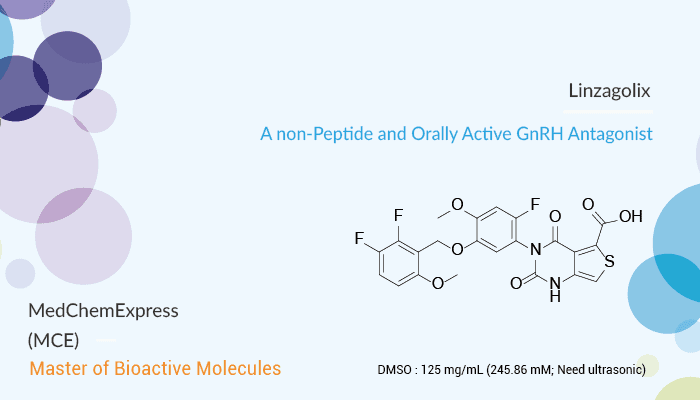Uterine myomas and endometriosis are sex-hormone-dependent diseases. They affect up to 50-60% and 10-50% women of reproductive age, respectively. Endometriosis is an estrogen-dependent chronic inflammatory disease. The pathophysiology of this complex disease is multifactorial: in its pathogenesis, hormonal dysfunction, and proinflammatory microenvironment of eutopic and ectopic endometrium play a significant role. The main symptoms related to endometriosis are pelvic pain and infertility. Estradiol (E2) seems to play a crucial role in the genesis and establishment of endometriotic implants. Uterine myomas (leiomyomas or fibroids) are common benign neoplasm of the uterus, composed of monoclonal somatic uterine smooth muscle cells. Hormones, and in particular estrogens, seem to play a defined pathogenetic role in both endometriosis and uterine myomas; therefore, control of their serum level has become the target of different types of therapies. Linzagolix is a GnRH antagonist for the research of endometriosis and uterine myomas.

Linzagolix is a potent, non-peptide, and orally active GnRH antagonist. It also has the advantage of having low pharmacodynamic variability with minimal intraday fluctuation of E2. Finally, its effect is rapidly reversible since ovarian activity tends to resume within two weeks from the end of treatment. Linzagolix has a linear pharmacokinetic profile with a half-life of 15-18 hours. It also has a high oral bioavailability and a low volume of distribution. Moreover, it has no accumulation in the fatty tissue. Overall, Linzagolix is a new oral GnRH antagonist with a promising pharmacokinetic profile for a single daily administration.
In summary, Linzagolix, an orally active GnRH antagonist, shows a dose-dependent and rapidly reversible action on the pituitary-gonadal axis. Linzagolix is a GnRH antagonist in phase II-III trials.
Reference:
Susan Dababou, et al. Expert Opin Investig Drugs. 2021 Sep;30(9):903-911.